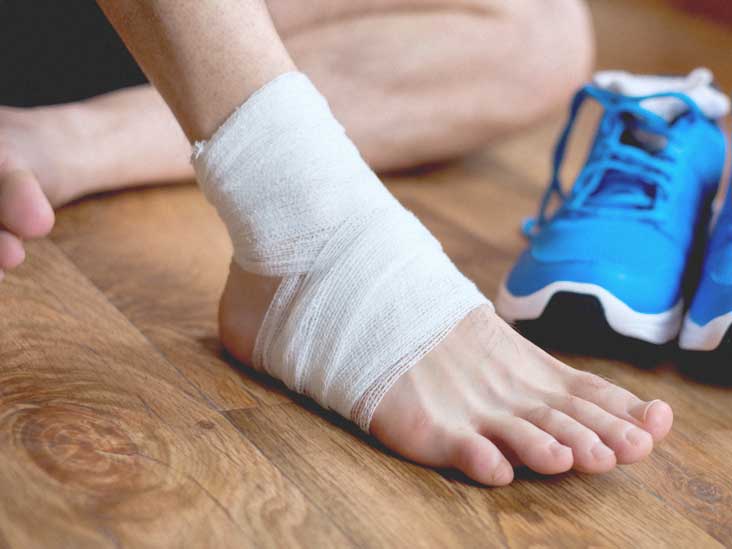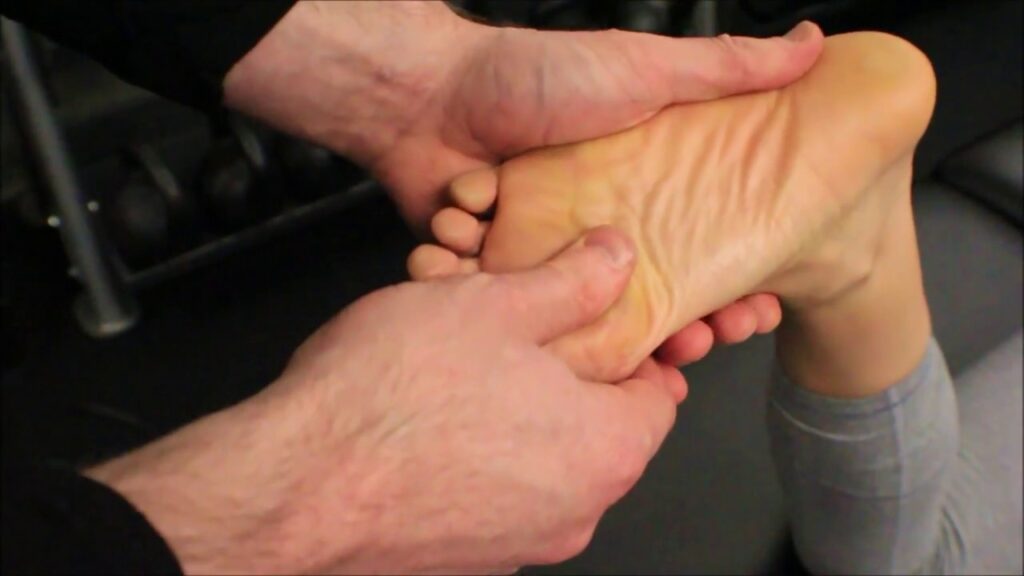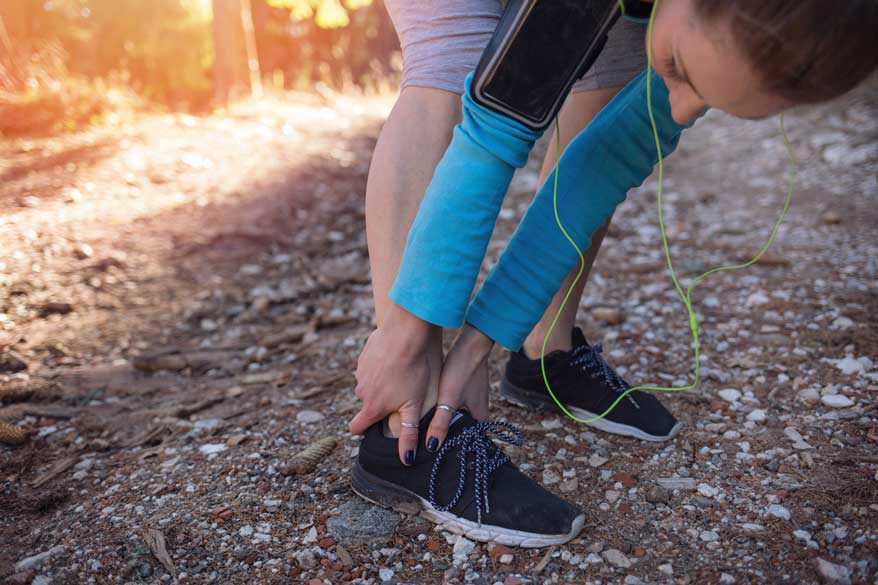CUBOID SYNDROME: CHRONIC LATERAL ANKLE PAIN
When we think of misalignments and subluxations we connect to the chiropractic treatments. But, this thought might be limited to the spine as chiropractors spend quite a bit of time treating misalignments and problems with the spine.
But, are you aware that chiropractic treatment can benefit you in various problems. There’s one condition in particular that you may not have heard of and your chiropractic care can provide immense benefit: Cuboid Syndrome.

But, are you aware that chiropractic treatment can benefit you in various problems. There’s one condition in particular that you may not have heard of and your chiropractic care can provide immense benefit: Cuboid Syndrome.
Cuboid syndrome results from the injury of the joint and ligaments near the cuboid bone causing it to tear. This is also referred to as a cuboid subluxation, which means that one of the bones in a joint is moved but not fully out of place.
If you have cuboid syndrome you may experience pain on the lateral side of the foot or the side of the little toe. People with cuboid subluxation often feel pain around the middle of the foot, or at the base of the fourth and fifth toes.
Sometimes, it is hard to tell exactly where this pain comes from which makes cuboid syndrome challenging to diagnose. This is usually confused with a stress fracture, but stress fractures are rare in the cuboid bone.
WHAT LEADS TO CUBOID SYNDROME?
The Cuboid bone is one of the 7 tarsal bones on the square-shaped foot. The cuboid bone is located on the outside of the foot, connecting the 4th and 5th metatarsals to the heel bone.
The most common causes of cuboid syndrome include:
- Injury: This is the most common cause of ankle sprain. This occurs when the ankle suddenly twists inward or outward.
- Repetitive Strain: Tension resulting through the peroneus longus muscle from repetitive activities like jumping and running. This may cause excessive traction on the bone causing it to sublux.
- Altered Foot Biomechanics: It has been observed that most people suffering from cuboid subluxation have flat feet.
- Overuse: This is the most common cause of cuboid syndrome affecting athletes and dancers. These both tend to work through the pain and are intensely active in high-stress situations that increase the risk of accidents. The injuries due to overuse develop after frequent extended periods of intense activity, such as running.
- Pronated Feet: Cuboid syndrome might also be more common in people with pronated feet, which means that their feet turn inward as they walk. When a person’s calf muscles (peroneus longus) are particularly tight, they can tug the cuboid bone out of place when the foot is pronated.
Some of the other activities that rarely cause cuboid subluxation to include:
- Sports players with rapid, side-to-side movements, such as tennis and racquetball.
- Climbing stairs.
- Wearing poorly fitting shoes, or shoes without adequate support.
- Training on uneven surfaces.
- Not resting and neglecting the need for recovery after strenuous activity.

WHAT ARE THE SYMPTOMS OF CUBOID SYNDROME?
Pain on the lateral side of the foot is the main symptom of cuboid syndrome. The pain may develop suddenly or slowly over time.
Other symptoms of cuboid syndrome include:
- Pain on the lateral of the foot that is the side of the little toe.
- Pain worsening with weight-bearing.
- Pain can be dull and aching, or sharp and acute.
- Difficulty walking.
- Difficulty hopping.
- Swelling near the affected area.
- Pain worsens when lifting the heel and pushing off the toe.
- Reduced range of motion of the foot and/or ankle.
- Sensitivity on the bottom of the foot.
- Pain refers to the outside of the ankle.
- Redness near the affected area.
- Loss of mobility in your ankle or lateral side of the foot.
- Weakness of your toes on the lateral side of the foot.
- Tenderness of the lateral side of your foot or your leg.
- Swelling near the dislocated ligaments or the ankle due to fluid buildup or edema.
It may sometimes lead to antalgic gait resulting from the change in the way you walk to minimize the pain of cuboid syndrome. An antalgic gait may further also lead to limping or swaying from side to side.
Diagnosis of cuboid syndrome is often difficult for the healthcare providers resulting in misdiagnosis. The chiropractor may recommend X-rays, MRIs, and CT scan to confirm cuboid subluxation. The chiropractor would check if the pain is felt while pressing firmly on the cuboid bone of your foot as there isn’t a specific test to diagnose the cuboid syndrome.

WHAT IS THE RISK OF DEVELOPING CUBOID SYNDROME?
Some of the factors that may increase the risk for cuboid syndrome, such as:
- Obesity or being overweight.
- Wearing shoes that are too tight or aren’t supportive.
- Not stretching your foot before a workout.
- Avoid resting your foot after doing strenuous physical activity.
- Walking, running, or doing physical activity on surfaces that aren’t flat
Bone fracture connected to the cuboid. - Practicing ballet without proper training.
- Different types of arthritis, including osteoarthritis and gout.
- Bone conditions, such as osteoporosis.
HOW TO TREAT CUBOID SYNDROME?
Treatment of cuboid syndrome begins with rest and reducing or eliminating activity that involves putting weight on the foot. A mild case of cuboid syndrome gets better with home treatments including RICE therapy, which is an acronym for rest, ice, compression, and elevation.
If the pain persists or worsens, you should see a doctor or chiropractor. The chiropractor can perform certain foot manipulations to resolve cuboid syndrome, including:
- The cuboid whip: The chiropractor would make you lie on your back with bending the knee and holding the injured foot. Chiropractors would then straighten your knee quickly with the foot flexed and pushing forcefully on the cuboid bone from the bottom of the foot to pop it back into place. Sometimes you may hear the bone popping into place, although the treatment does not have to be audible to work.
Most chiropractors and podiatrists offer various foot orthotics due to excessive foot pronation resulting from the cuboid syndrome. A foot orthotic procedure helps in correcting the pronation for the long term. - The cuboid squeeze: This method is proven to work better if cuboid syndrome pain is worse on top of the foot. The chiropractor would make you lie with your leg relaxed and off the edge of a table. The chiropractor would then hold the foot, flex it, and pushes on the cuboid from the top of the foot.
Manipulation of the cuboid bone provides the best result if is done within 24 hours of the injury. If the pain does not get treated for an extended period, the injury may require many manipulations. Foot manipulation under chiropractic care is not recommended if an individual is also dealing with other conditions, such as arthritis, a broken bone, circulatory or nerve problems, or bone disease.

Some of the additional treatments for cuboid syndrome include:
- Using a pad to stabilize the joints in the middle of the foot
- Taping the foot to help keep it stable
- Wearing orthotics to support proper alignment
- Taking anti-inflammatory medications to reduce pain and swelling
- Deep-tissue massaging of calf muscles, which may be pulling on the cuboid bone
- Surgery is rarely recommended for this condition, and only when other treatment options have not brought relief.

OUTLOOK
Cuboid syndrome is not a serious condition and can usually be treated by chiropractic care along with home care.
People Also Read:
Do Chiropractors Help with Knee Pain Relief?
Plantar fasciitis – Causes, Symptoms and Treatment
If you or anyone you know is suffering from ankle pain, our expert providers at Zenith Injury Relief & Wellness Clinic will take care of your health and help you recover.
Call us on 972-210-0033 to book an appointment with our specialists, and begin living your life pain-free.
